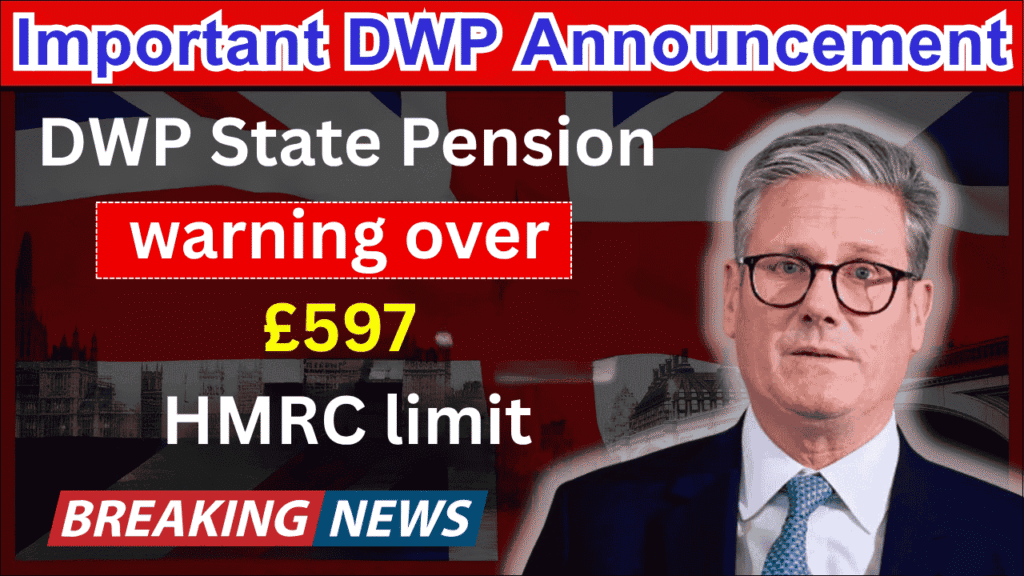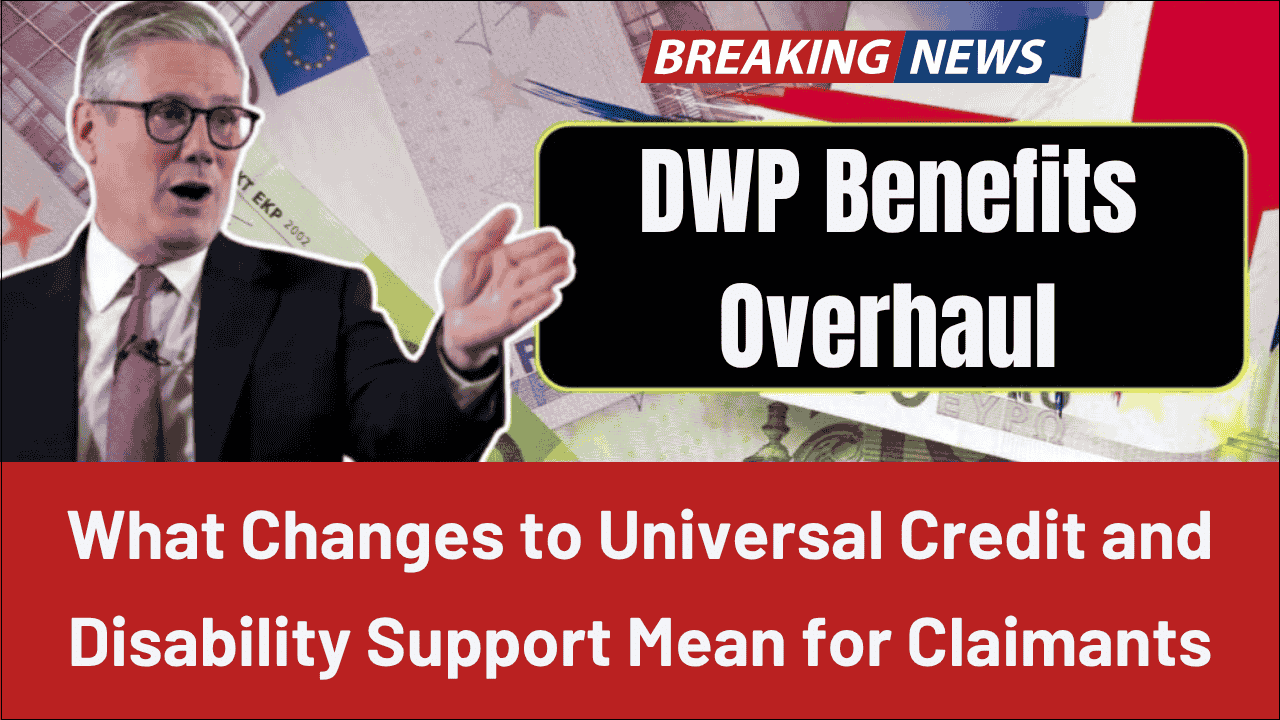
UK state pensioners are facing an unprecedented tax situation as the gap between the State Pension and the Personal Tax Allowance narrows to just £597 annually. Following the latest 4.1% Triple Lock increase in April 2025, the full New State Pension now stands at £230.25 per week, equivalent to £11,973 per year. This brings pensioners perilously close to the £12,570 Personal Allowance threshold, beyond which they will be liable for income tax at 20% on every additional pound earned.
This dramatic narrowing of the tax-free gap represents a significant shift in the financial landscape for UK pensioners, many of whom have never previously faced income tax liability on their state pension income. The situation has prompted warnings from tax experts, financial advisors, and campaign groups about the potential administrative burden and psychological impact on elderly citizens who may soon receive unexpected tax bills from HMRC.
The Low Incomes Tax Reform Group has called for urgent action, urging the Department for Work and Pensions (DWP) and HMRC to work together to provide advance warning to pensioners who are approaching the tax threshold. They recommend that warning information should be included with the annual State Pension notification letters sent out each spring before the April pension increases take effect.
Understanding the Current State Pension Tax Position
The State Pension has always been subject to income tax, but for decades, the majority of pensioners have remained below the Personal Allowance threshold, effectively making their state pension income tax-free. However, the combination of frozen tax allowances since 2021-22 and consistent Triple Lock increases to the State Pension has created an unprecedented convergence that will soon push many pensioners into the tax system for the first time.
Under the current system, the Personal Allowance remains frozen at £12,570 until at least the 2027-28 tax year, while the State Pension continues to rise annually under the Triple Lock guarantee. This mechanism ensures that the State Pension increases by the highest of inflation, average earnings growth, or 2.5% each year, providing crucial protection against the erosion of pension purchasing power.
Current State Pension and Tax Threshold Comparison
| Year | Weekly State Pension | Annual State Pension | Personal Allowance | Tax-Free Gap | Status |
|---|---|---|---|---|---|
| 2024-25 | £221.20 | £11,502.40 | £12,570 | £1,067.60 | Tax-free |
| 2025-26 | £230.25 | £11,973.00 | £12,570 | £597.00 | Tax-free |
| 2026-27 | £238.35* | £12,394.20* | £12,570 | £175.80* | Tax-free |
| 2027-28 | £247.12* | £12,850.24* | £12,570 | -£280.24* | Taxable |
*Projected figures based on estimated 3.5% annual increases
The Triple Lock Mechanism and Its Impact
The Triple Lock system, introduced in 2010, has been instrumental in protecting pensioner incomes against inflation and ensuring that state pensions maintain their purchasing power over time. However, the interaction between this protection mechanism and frozen tax thresholds has created an unintended consequence that will soon see millions of pensioners liable for income tax on their basic state pension for the first time.
The mechanism works by comparing three key economic indicators each year and applying the highest increase to the State Pension. For the 2025-26 increase, average earnings growth of 4.1% was the highest of the three measures, resulting in the current pension level of £230.25 per week.
Historical Triple Lock Increases and Tax Implications
| Year | Inflation Rate | Earnings Growth | Applied Increase | Cumulative Impact |
|---|---|---|---|---|
| 2022-23 | 10.1% | 8.3% | 10.1% | Major pension boost |
| 2023-24 | 8.5% | 5.1% | 8.5% | Continued high increases |
| 2024-25 | 3.9% | 8.8% | 8.8% | Strong earnings-led growth |
| 2025-26 | 2.3% | 4.1% | 4.1% | Moderate but significant |
Tax Collection Mechanisms for State Pensioners
When pensioners do cross the income tax threshold, HMRC employs several different methods to collect the tax owed on state pension income. The approach used depends on the pensioner’s circumstances and whether they have other sources of income that can facilitate tax collection through the Pay As You Earn (PAYE) system.
How HMRC Collects Tax on State Pension Income
| Collection Method | When Used | Process | Typical Amount |
|---|---|---|---|
| PAYE Adjustment | Pensioner has private/workplace pension | Tax code adjusted to collect via other pension | Most common method |
| Simple Assessment | State pension only income | Direct bill sent after tax year end | Small amounts initially |
| Self Assessment | Complex tax affairs | Annual tax return required | Larger or complicated cases |
| Direct Collection | Specific circumstances | Payment arrangement with HMRC | Varies by situation |
For pensioners with private or workplace pensions, HMRC typically adjusts their tax code to collect the state pension tax through deductions from their other pension income. This approach avoids the need for direct billing and integrates the tax collection into existing PAYE arrangements.
However, for the estimated millions of pensioners who rely solely on the State Pension, HMRC will need to use alternative collection methods, primarily through Simple Assessment calculations sent after the end of each tax year.
Financial Impact and Practical Implications
The initial tax liability for pensioners whose state pension just exceeds the Personal Allowance will be relatively modest. Financial experts calculate that in the first year of crossing the threshold (likely 2027-28), pensioners could face tax bills as low as £1.83 annually, based on exceeding the threshold by just £9.13.
However, the administrative impact could be disproportionate to the amounts involved. HMRC will need to identify, assess, and collect tax from potentially millions of new taxpayers, many of whom have never previously been required to engage with the tax system in their retirement.
Projected Tax Liability Progression
| Year | Annual State Pension | Amount Over Threshold | Tax Due (20%) | Monthly Impact |
|---|---|---|---|---|
| 2027-28 | £12,579.13 | £9.13 | £1.83 | £0.15 |
| 2028-29 | £13,039.71 | £469.71 | £93.94 | £7.83 |
| 2029-30 | £13,521.14 | £951.14 | £190.23 | £15.85 |
| 2030-31 | £14,024.57 | £1,454.57 | £290.91 | £24.24 |
Martin Lewis’s Tax System Explanation
Financial expert Martin Lewis has addressed concerns about pensioners being worse off due to paying tax on their state pension increases. He emphasizes that the UK operates a marginal tax system, meaning that tax is only paid on income above the threshold, not on the entire amount.
Lewis explains that even if £1,000 of additional pension income is subject to 20% tax, the pensioner still receives £800 more than they had before. The tax system ensures that earning more money always results in receiving more money, even after tax is deducted.
This principle applies equally to state pension increases that push pensioners over the tax threshold. While they will pay tax on the excess amount, they will still be financially better off than before the increase.
Government Policy Responses and Potential Solutions
The Conservative Party has proposed introducing a new pensioner-specific Personal Allowance that would rise in line with the State Pension, effectively ensuring that the full state pension remains tax-free. This approach would create a separate, higher tax threshold for those of state pension age while maintaining the current frozen allowance for working-age taxpayers.
Alternative proposals include unfreezing the Personal Allowance for all taxpayers, though this would cost the Treasury significantly more money. Government estimates suggest that a £500 increase in the Personal Allowance for everyone would cost approximately £4.3 billion annually.
Potential Policy Options Comparison
| Policy Option | Cost to Treasury | Beneficiaries | Implementation Complexity | Political Feasibility |
|---|---|---|---|---|
| Pensioner-only allowance | £2.1 billion | 12 million pensioners | Moderate | High |
| Universal allowance increase | £4.3 billion | All taxpayers | Low | Medium |
| State pension exemption | £1.8 billion | State pensioners only | High | Medium |
| Graduated threshold | £2.8 billion | Age-based groups | Very high | Low |
HMRC Administrative Challenges
The prospect of millions of new taxpayers entering the system presents significant administrative challenges for HMRC. The tax authority will need to expand its capacity to handle Simple Assessment calculations, direct tax collection, and customer service inquiries from elderly taxpayers unfamiliar with the tax system.
Industry experts warn that the administrative costs of collecting relatively small amounts of tax from millions of pensioners could be disproportionate to the revenue generated, particularly in the early years when tax liabilities will be minimal.
HMRC has indicated that it may choose not to pursue very small tax amounts, but has not yet provided clear guidance on what constitutes a “de minimis” threshold for collection purposes.
Impact on Different Pensioner Groups
The tax implications vary significantly depending on pensioners’ individual circumstances and total income levels:
Single State Pension Recipients
Pensioners who rely solely on the State Pension will be the most affected group, as they will transition from paying no income tax to receiving direct tax bills from HMRC. This group represents several million individuals who have structured their retirement around receiving tax-free state pension income.
Pensioners with Additional Income
Those with private pensions, part-time employment, or investment income are already familiar with the tax system and will see minimal disruption. Their existing tax codes will be adjusted to collect the additional liability through PAYE mechanisms.
Married Couples and Civil Partners
Couples may have opportunities to optimize their tax position through pension sharing arrangements or by transferring assets to the lower-earning partner, though these strategies require careful planning and professional advice.
International Comparisons and Context
The UK’s approach to taxing state pensions aligns with most developed countries, where state pension income is generally subject to income tax. However, many countries provide specific allowances or reliefs for pensioner taxpayers to account for their typically lower incomes and reduced earning capacity.
Countries such as Germany, France, and Canada offer various forms of age-related tax reliefs, while others like Australia provide tax-free thresholds specifically designed for retirees. The UK’s historical approach of providing universal tax-free allowances regardless of age is becoming increasingly uncommon among developed nations.
Official Government Resources and Support
For pensioners concerned about potential tax liabilities, several official government resources provide guidance and support:
- GOV.UK Pension Tax Information – Comprehensive guide to pension taxation
- HMRC Personal Allowance Details – Current tax rates and allowances
- DWP State Pension Information – Official state pension guidance
- Low Incomes Tax Reform Group – Independent guidance for low-income taxpayers
Expert Recommendations and Planning Advice
Tax experts recommend that pensioners approaching the threshold should:
- Monitor their total income from all sources to understand when they might cross the tax threshold
- Keep detailed records of all pension and investment income for potential tax calculations
- Consider professional advice if their financial situation is complex or they have concerns about tax planning
- Stay informed about potential policy changes that might affect their tax position
Financial advisors suggest that the relatively small initial tax amounts should not cause undue concern, but pensioners should be prepared for the administrative requirements of engaging with the tax system.
Future Projections and Long-term Outlook
Economic forecasts suggest that without policy intervention, the gap between the State Pension and Personal Allowance will continue to widen each year. By 2030, pensioners relying solely on the State Pension could face annual tax bills exceeding £290, representing a significant ongoing liability for those on fixed incomes.
The situation highlights the broader challenge of maintaining an appropriate balance between protecting pensioner incomes through the Triple Lock while ensuring that tax thresholds keep pace with economic growth and inflation.
Political pressure for reform is likely to intensify as more pensioners are affected, particularly given the electoral importance of the older demographic and their historically high voting participation rates.
Preparing for Change: Practical Steps
Pensioners can take several practical steps to prepare for potential tax liabilities:
- Review total income sources to understand their complete financial picture
- Set aside small amounts each month to cover potential future tax bills
- Familiarize themselves with HMRC’s Simple Assessment process
- Consider consolidating multiple small pension pots to simplify tax collection
- Seek professional advice if they have complex financial arrangements
The key message from financial experts is that while paying tax on state pension income represents a change, the marginal nature of the tax system ensures that pensioners will always be better off financially than before any pension increase.
Frequently Asked Questions
Will I be worse off if I have to pay tax on my state pension? No, you will always be financially better off as tax is only paid on income above the threshold, leaving you with more money overall.
How will HMRC collect tax if I only receive the state pension? HMRC will typically send you a Simple Assessment calculation after the tax year ends, requiring direct payment of the tax due.
Can I avoid paying tax by deferring my state pension? While deferring increases your eventual pension, you would still pay tax once your total income exceeds the Personal Allowance threshold.
What should I do if I receive an unexpected tax bill from HMRC? Contact HMRC immediately to verify the calculation and discuss payment options, including potential installment arrangements if needed.
The convergence of the State Pension with the Personal Allowance threshold represents a historic shift in UK pension taxation that will affect millions of retirees. While the financial impact may be modest initially, the administrative and psychological effects could be significant for elderly citizens unfamiliar with the tax system. Clear communication from government agencies and appropriate policy responses will be crucial to managing this transition effectively.







